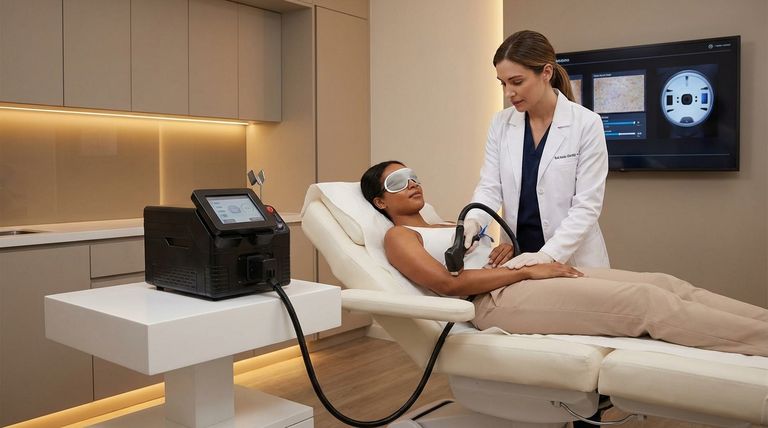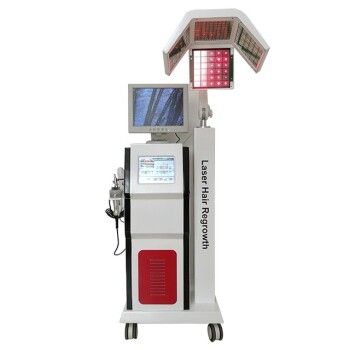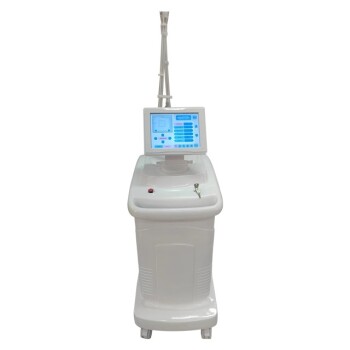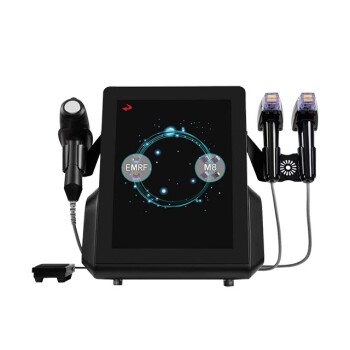There is no single "most effective" form of laser hair removal. The best laser is entirely dependent on the specific combination of your skin tone and hair color, as different lasers are designed to target different levels of pigment.
The core principle of effective laser hair removal is to use a wavelength of light that is strongly absorbed by the melanin in the hair follicle but minimally absorbed by the melanin in the surrounding skin. This is why the ideal laser for someone with fair skin and dark hair is different from the ideal laser for someone with darker skin.

How Laser Hair Removal Works
The Role of Melanin
Laser hair removal technology works by emitting a concentrated beam of light that is absorbed by the pigment, or melanin, in the hair.
This light energy converts to heat, which damages the hair follicle. This damage inhibits or delays future hair growth.
The Importance of the Growth Cycle
Hair grows in different cycles. A laser can only successfully disable a follicle when the hair is in its active growth phase. This is why multiple treatment sessions spaced several weeks apart are always necessary for significant hair reduction.
Matching the Laser to Your Hair and Skin
The "best" laser is simply the one that most safely and effectively targets your hair without damaging your skin. This is determined by the laser's wavelength, measured in nanometers (nm).
The Alexandrite Laser (755nm)
The Alexandrite laser has the highest attraction to melanin, making it extremely effective. Its primary strength lies in treating light-colored or fine hair that other lasers might miss.
However, because it so aggressively targets melanin, it is only safe for individuals with fair to light olive skin tones (Fitzpatrick types I-III).
The Diode Laser (810nm)
The Diode laser is a versatile and common choice, offering a good balance of effectiveness and safety. It penetrates deeper into the skin than the Alexandrite laser.
This makes it a strong option for treating darker, thicker hairs on a wider range of skin tones, from fair to medium-tan.
The Nd:YAG Laser (1064nm)
The Nd:YAG laser has the longest wavelength, which means it has a much lower attraction to melanin. This might seem counterintuitive, but it's a critical safety feature.
Because it bypasses the melanin in the epidermis (the top layer of skin), it is the safest and most effective option for dark skin tones (Fitzpatrick types IV-VI). It is highly effective on dark, coarse hair.
Understanding the Trade-offs
The Risk on Untreated Skin
Using a laser with high melanin absorption, like an Alexandrite, on dark skin is dangerous. The laser cannot distinguish between the melanin in the hair and the melanin in the skin, which can lead to burns, blistering, and changes in skin pigmentation.
The Limitation on Light Hair
The opposite is also true. Since the technology relies on pigment, it is not effective on very light blonde, red, gray, or white hair. These hairs lack the necessary melanin to absorb the laser's light and generate heat.
Operator Skill is Crucial
The most advanced laser in the world is ineffective in the hands of an inexperienced technician. A skilled professional is essential for correctly identifying your skin and hair type and selecting the appropriate laser and settings.
Making the Right Choice for Your Goal
To determine the best laser for you, focus on your specific characteristics.
- If your primary focus is treating fine or light-colored hair on fair skin: The Alexandrite laser is often the most efficient and powerful option.
- If your primary focus is treating coarse, dark hair on light to medium skin: The Diode laser provides an excellent balance of effectiveness and safety.
- If your primary focus is safely treating hair on tan or dark skin: The Nd:YAG laser is the gold standard and the only choice you should consider.
Ultimately, the most critical decision is choosing a qualified provider who understands the science of matching the right technology to your unique needs.
Summary Table:
| Laser Type | Wavelength | Best For | Key Consideration |
|---|---|---|---|
| Alexandrite | 755nm | Fair skin (Types I-III) with light/fine hair | Highest melanin absorption; unsafe for dark skin |
| Diode | 810nm | Fair to medium-tan skin with dark, coarse hair | Versatile balance of effectiveness and safety |
| Nd:YAG | 1064nm | Tan to dark skin (Types IV-VI) with dark hair | Safest for dark skin; bypasses epidermal melanin |
Ready to achieve smooth, hair-free skin with the right technology?
Choosing the correct laser is the first step to safe and effective results. BELIS specializes in providing professional medical aesthetic equipment, including advanced Alexandrite, Diode, and Nd:YAG laser systems, to medical aesthetics clinics and premium beauty salons.
Our experts can help you select the ideal laser technology to enhance your treatment offerings, ensure client safety, and grow your business.
Contact BELIS today for a professional consultation and discover the perfect laser solution for your clinic's needs.
Visual Guide

Related Products
- Diode Laser SHR Trilaser Hair Removal Machine for Clinic Use
- Diode Tri Laser Hair Removal Machine for Clinic Use
- Trilaser Diode Hair Removal Machine for Beauty Clinic Use
- Clinic Diode Laser Hair Removal Machine with SHR and Trilaser Technology
- Clinic Use IPL and SHR Hair Removal Machine with Nd Yag Laser Tattoo Removal
People Also Ask
- What skin type is diode laser for? Safe Hair Removal for Light to Dark Skin
- Does diode laser remove hair permanently? Understanding Permanent Hair Reduction
- How effective is diode laser hair removal? Achieve Long-Term Hair Reduction Safely
- What are the disadvantages of diode laser hair removal? Key Limitations & Safety Risks Explained
- How does diode laser hair removal work? The Science of Targeting Hair Follicles



















